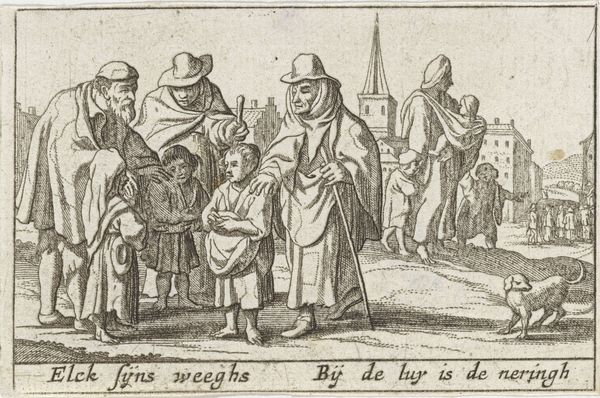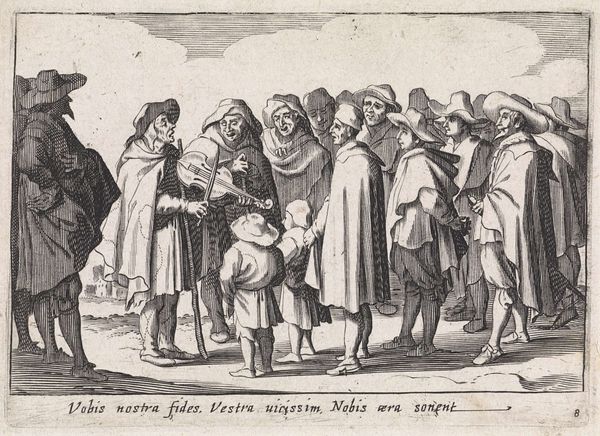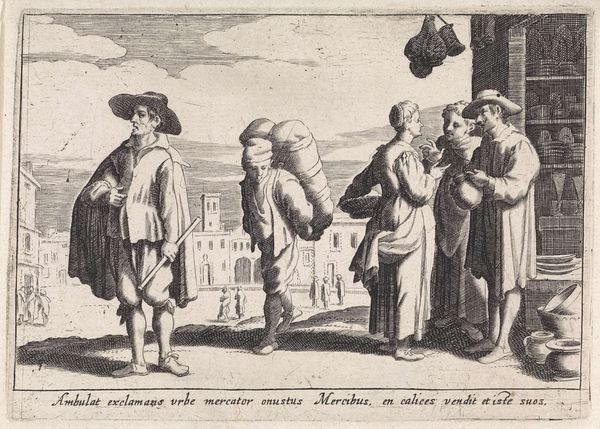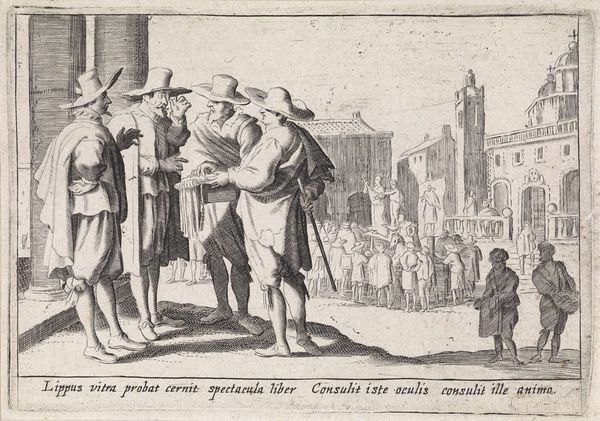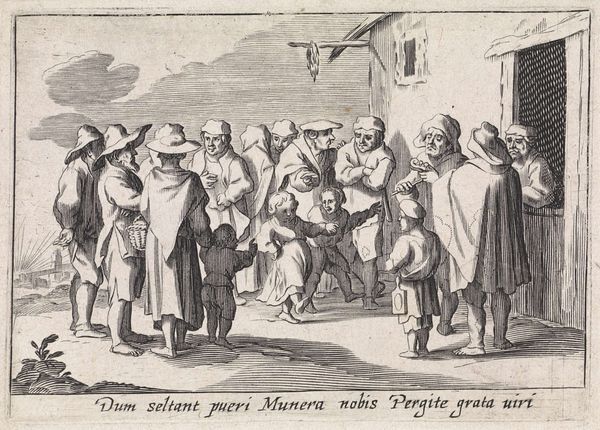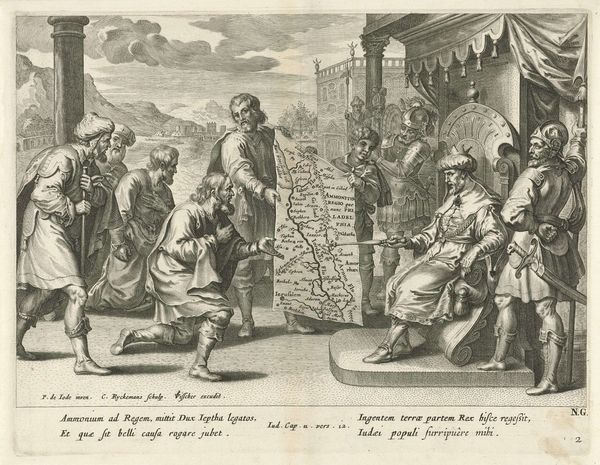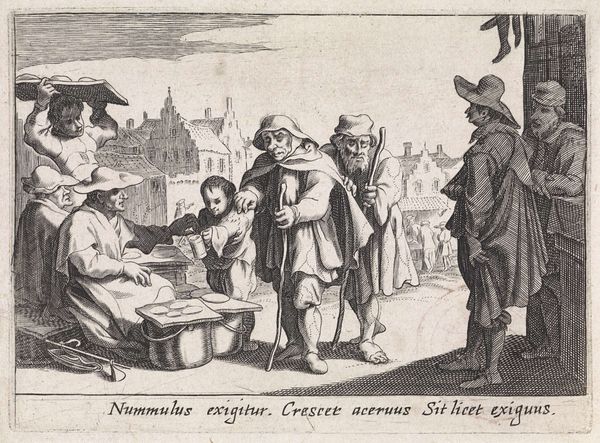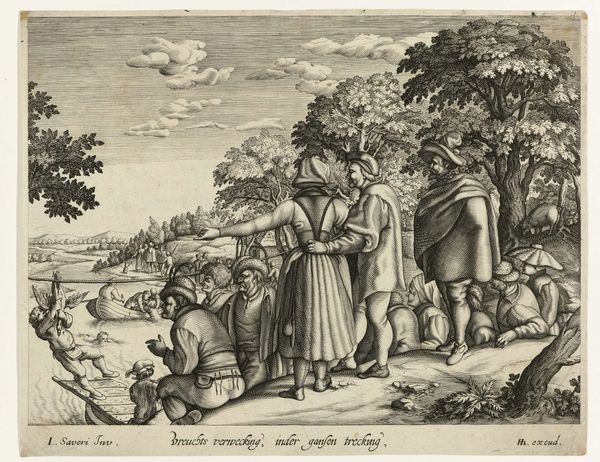
print, engraving
#
baroque
# print
#
figuration
#
cityscape
#
genre-painting
#
history-painting
#
engraving
Dimensions: height 82 mm, width 111 mm
Copyright: Rijks Museum: Open Domain
Curator: This print is titled "Three Arms on the Street," dating back to 1629. It's an engraving, likely meant for widespread distribution. Editor: It's immediately striking how it merges a close portrayal of people on the street with the barest outline of a cityscape in the background, but that stark composition amplifies the figures, and something in the expressions feels both weary and hopeful. Curator: Absolutely, it presents a visual paradox. Note how poverty is almost ritualized through certain iconographic signs: staffs for stability, children clinging, which speaks of a deeper narrative – the street itself representing a liminal space, a world turned upside down, perhaps referencing cultural anxieties about social upheaval. Editor: I am also focused on the lines themselves. The material reality of engraving dictates everything; each line painstakingly etched to conjure textures, volume, even shadow, to communicate an idea about social class, religious conviction or moral character. Curator: I wonder though: is this scene one of suffering, of social criticism, or are there are more encoded messages here, of resilience and adaptation? Notice the gestures, particularly the protective arms around the children—are they symbolic representations of kinship and care? Editor: Perhaps the print functioned like an early photograph, recording urban types and trades for posterity. Its affordability as a multiple also brings in the question of how many people had access to, and ownership of, this story about those on the street? Who did they make this "news" for? Curator: Fascinating – to consider its immediate context as both artistic object and as potential disseminator of popular belief. Its baroque flourishes of movement almost contrast to the gravity it depicts, thus adding complexity and dynamism to an essentially challenging subject. Editor: Yes, and the scale also plays its role. An easily circulated piece would carry new meaning dependent on its viewers and surroundings, as evidence that everyday materials can carry messages far beyond initial construction. Curator: The layered meanings embedded here speak not only to the artist’s time but potentially still resonant in our own. We witness history, vulnerability and yet still find visual echoes of strength, making the humble engraving a testament to both human suffering and perseverance. Editor: A perfect thought, it underscores that such material-based media are indeed never just static artifacts from a singular "golden" age, but continuously evolving parts of history itself.
Comments
No comments
Be the first to comment and join the conversation on the ultimate creative platform.
